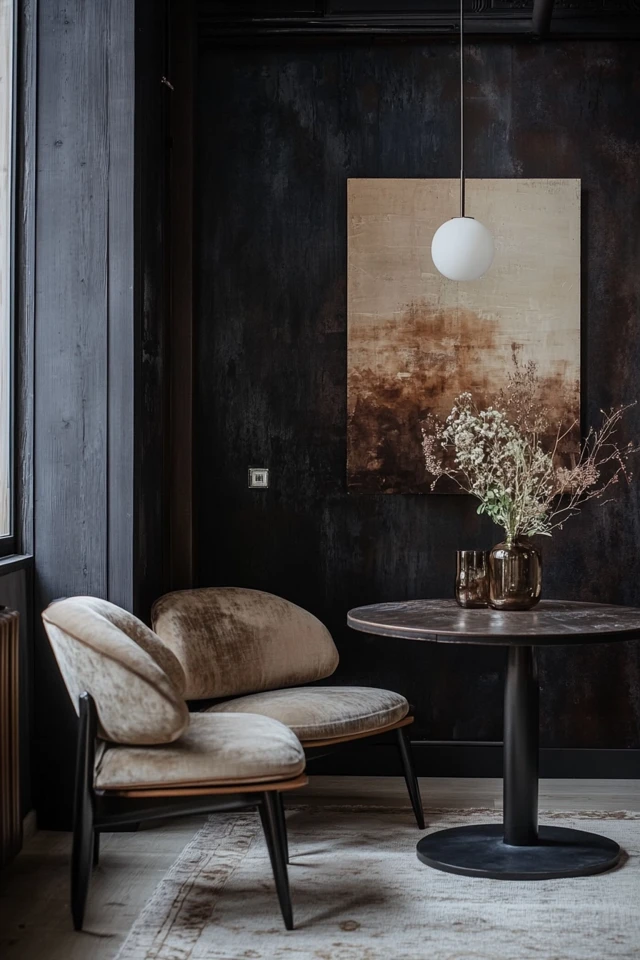Introduction
Monochromatic spaces have a timeless appeal, exuding elegance and simplicity. However, many people worry that sticking to a single color palette will make their rooms feel cold, sterile, or uninviting. The good news is that with a few strategic design choices, you can create monochromatic spaces that are not only cohesive and sophisticated but also warm, welcoming, and full of personality.
I remember the first time I designed a monochromatic space—it was for a small home office. I chose shades of gray for the walls, furniture, and decor, but the room initially felt flat and uninspired. After adding layers of texture, subtle pattern variations, and a few metallic accents, the space completely transformed. It became a serene and functional environment that felt anything but boring. That experience taught me that the key to making monochromatic spaces inviting lies in the details.
In this guide, we’ll explore how to master the art of monochromatic design while ensuring your space feels cozy and full of life. Whether you love soft neutrals, bold blues, or earthy greens, these tips will help you create a harmonious yet dynamic look that’s as inviting as it is stylish.
The Perfect Design for You
Monochromatic spaces are perfect for anyone who values clean, cohesive design and wants to create a serene, elegant environment. They’re particularly suited for small spaces, as the lack of contrast can make a room feel larger and more unified.
Imagine a living room in varying shades of beige, where plush sofas, linen curtains, and a jute rug come together to create a calming retreat. Or picture a dining room decked out in navy tones, with a velvet table runner, upholstered chairs, and metallic accents that add depth and drama. Monochromatic design allows you to showcase your favorite color while keeping the overall aesthetic balanced and refined.
Whether your style leans minimalist, rustic, or contemporary, monochromatic spaces can be adapted to suit any taste. The secret lies in creating contrast, texture, and subtle variation within your chosen color palette.
Picture Gallery
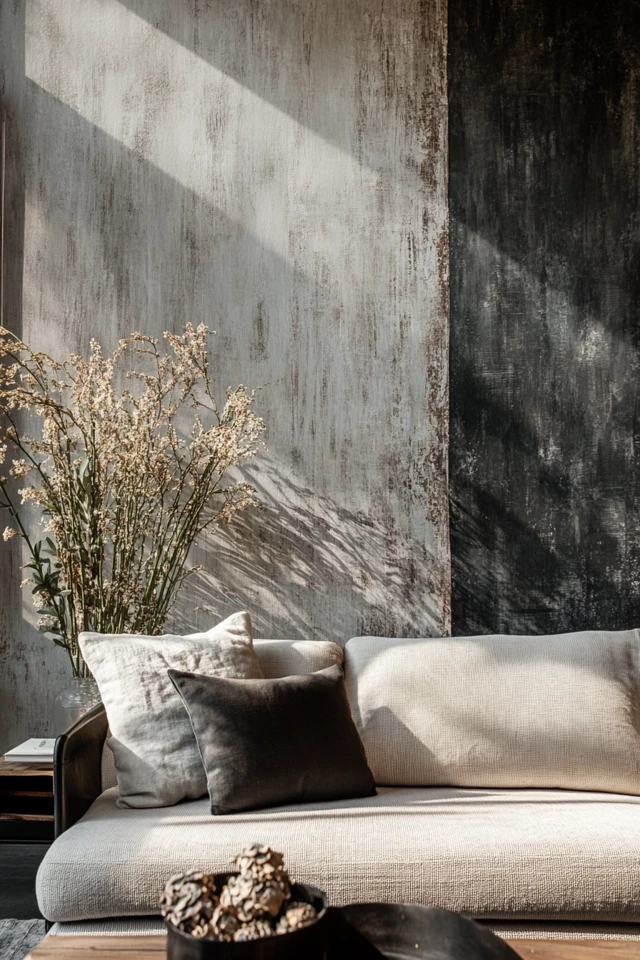
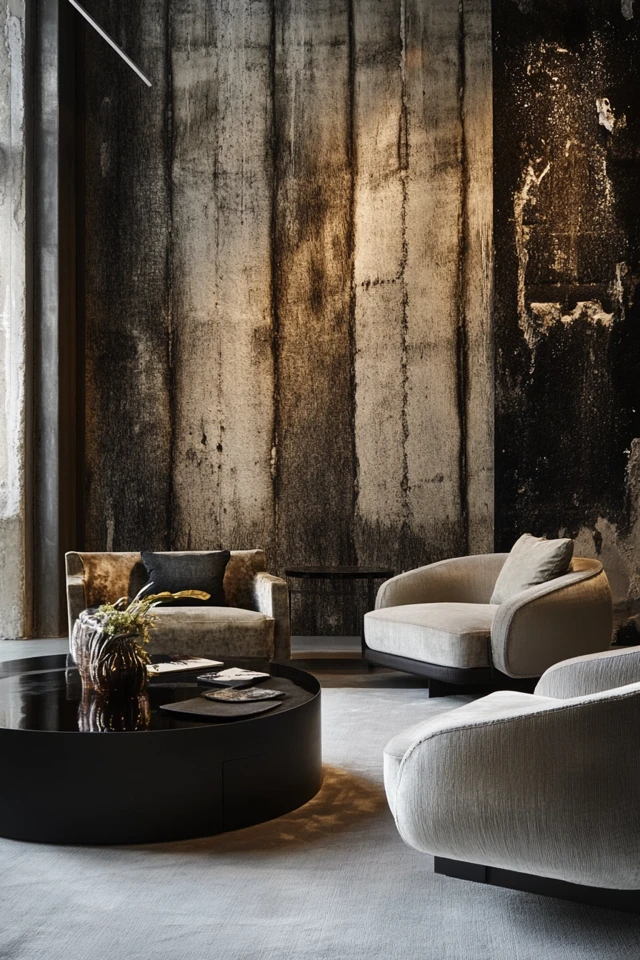

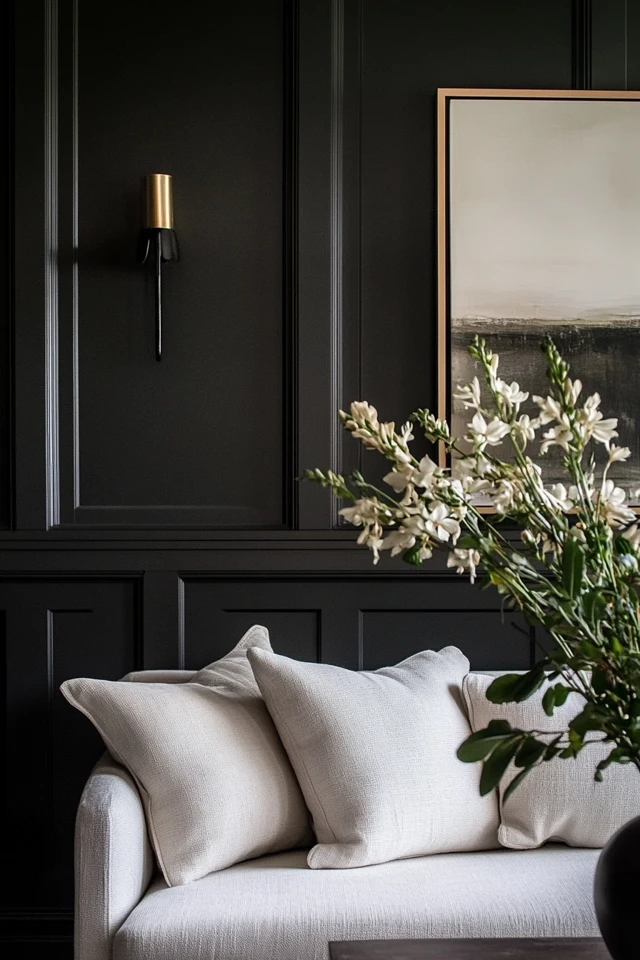
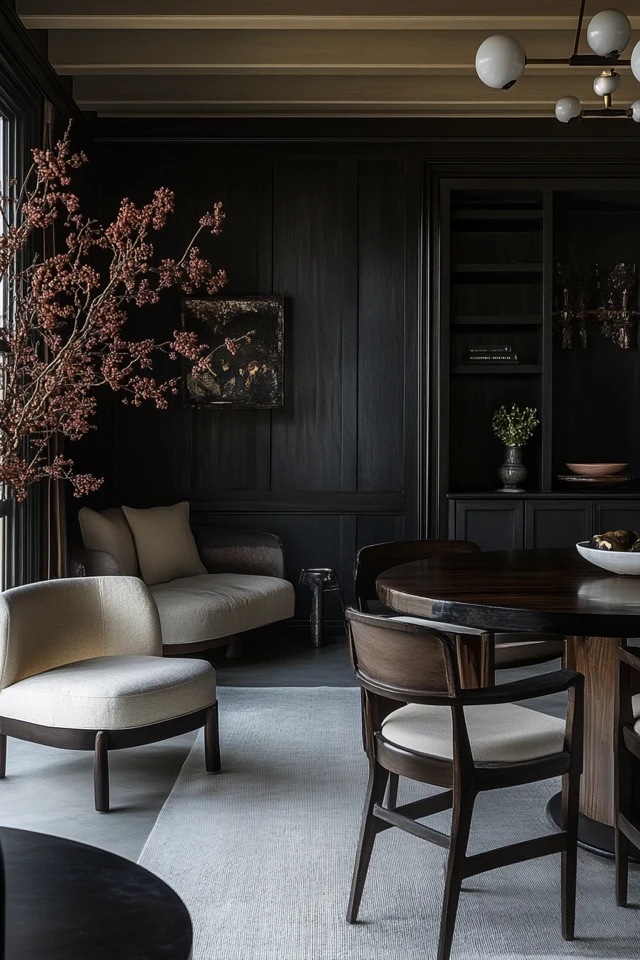
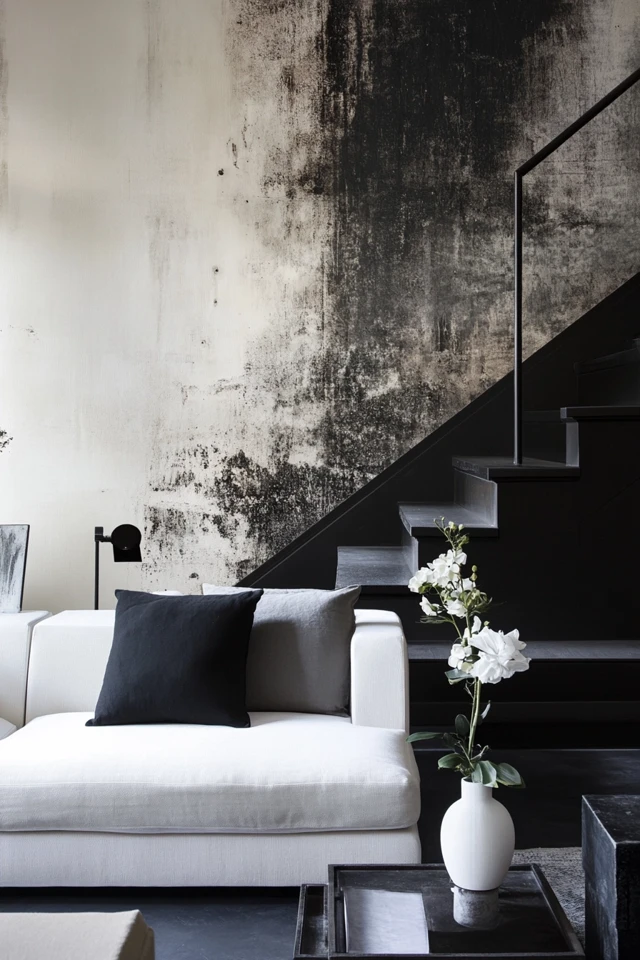
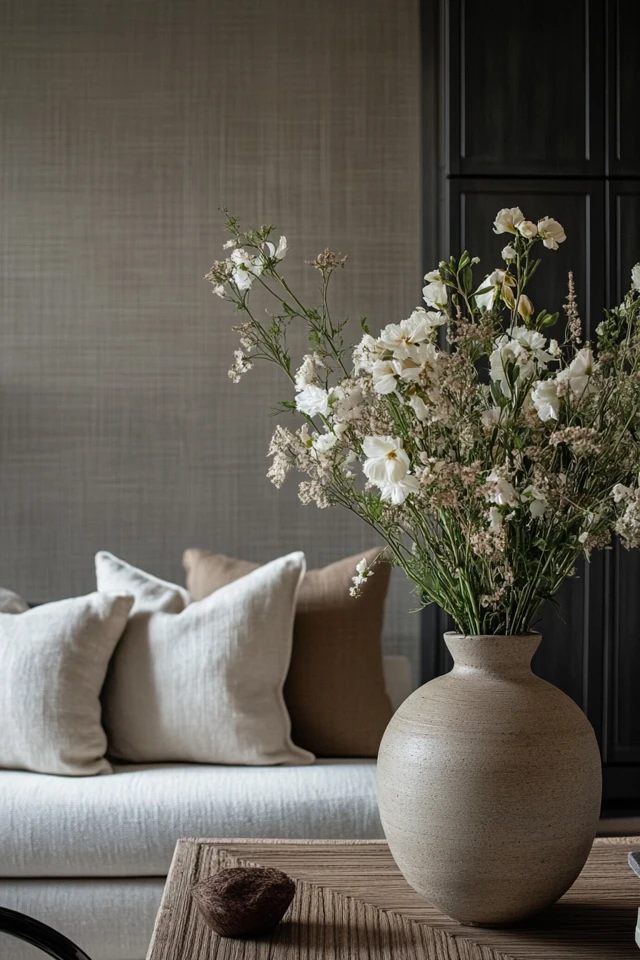
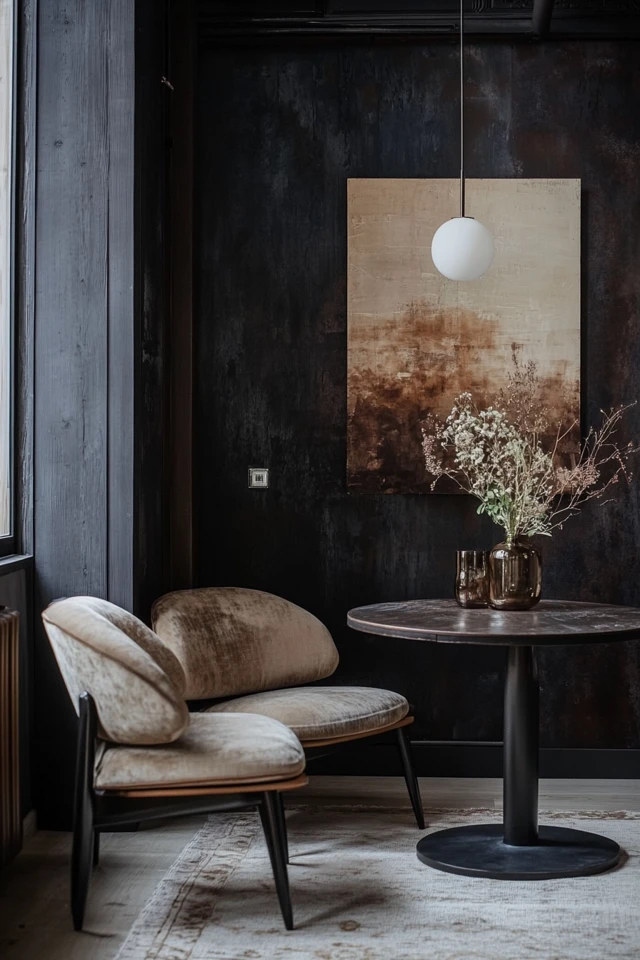
Why These Key Elements Work So Well Together
Monochromatic spaces succeed when balance, texture, and layering come together seamlessly. Here’s why these key elements work so well in creating an inviting atmosphere:
- Layered Tones: Using a range of shades and tones within the same color family adds depth and dimension, preventing the space from feeling flat or one-dimensional.
- Texture Play: Incorporating a variety of textures—such as soft fabrics, rough natural materials, and smooth finishes—creates tactile interest that draws people in.
- Subtle Patterns: Adding patterns in tonal variations, such as stripes, geometric prints, or florals, adds visual intrigue without disrupting the cohesive palette.
- Accent Materials: Introducing complementary materials like wood, metal, or glass adds warmth and contrast while keeping the overall design unified.
- Lighting Enhancements: Thoughtful lighting choices, such as warm ambient lighting or directional spotlights, highlight the room’s textures and tones, making the space feel cozy and dynamic.
Evidence-based design suggests that monochromatic spaces promote a sense of calm and relaxation, as the lack of contrasting colors reduces visual noise. By incorporating variation within the palette, you can maintain that tranquility while keeping the design engaging and full of character.
How to Design Monochromatic Spaces That Still Feel Inviting: Step-by-Step
1. Choose Your Base Color
- Select a single color family as the foundation for your design. Consider the mood you want to create:
- Neutral Shades (Beige, Gray, White): For a calm and timeless feel.
- Bold Colors (Navy, Forest Green, Burgundy): For drama and sophistication.
- Earthy Tones (Terracotta, Olive, Sand): For warmth and a connection to nature.
2. Create a Tonal Palette
- Build a palette with multiple shades of your chosen color:
- Use lighter tones for walls or large furniture pieces.
- Introduce mid-tones in textiles and smaller decor.
- Add darker shades for accents, such as throw pillows, lamps, or artwork.
3. Incorporate Texture
- Layer different textures to create depth and interest:
- Combine soft materials like velvet, wool, or linen with harder surfaces like stone, metal, or glass.
- Example: Pair a plush velvet sofa with a textured wool rug and a polished wood coffee table.
4. Add Subtle Patterns
- Use patterns that align with your palette to break up visual monotony:
- A striped rug in tonal shades.
- Throw pillows with subtle geometric or botanical prints.
- A patterned wallpaper or accent wall in a tonal design.
5. Introduce Contrast with Materials
- Complement your monochromatic palette with contrasting materials:
- Warm wood tones (oak, walnut) for furniture or flooring.
- Cool metals (brass, chrome) for lighting fixtures and decor.
- Clear or frosted glass for tables, vases, or pendant lights.
6. Use Lighting Strategically
- Lighting can make or break a monochromatic space:
- Use warm, ambient lighting to create a cozy atmosphere.
- Highlight textures and focal points with directional spotlights or uplighting.
- Incorporate statement lighting, like a chandelier or sculptural floor lamp, for added drama.
7. Play with Proportions and Shapes
- Add visual variety by mixing different shapes and proportions:
- Round mirrors or tables to soften straight-lined furniture.
- Oversized artwork or a bold statement chair to add drama.
- A mix of tall and low decor elements to create balance.
8. Incorporate Natural Elements
- Bring warmth and life into your space with natural elements:
- Greenery (real or faux plants) to contrast and freshen the palette.
- Woven baskets or jute rugs for an organic touch.
- Stone or ceramic decor for texture and earthiness.
9. Add Metallic or Reflective Accents
- Metallic finishes and reflective surfaces add depth and light:
- Use brass or gold for warmth, or silver and chrome for a cooler look.
- Incorporate mirrors, glass, or high-gloss finishes to reflect light and expand the space visually.
10. Edit and Refine
- Step back and assess your design:
- Remove any elements that feel out of place or disrupt the palette.
- Ensure every piece contributes to the overall harmony of the room.
FAQ
1. What is a monochromatic space?
A monochromatic space is designed using variations of a single color, creating a cohesive and harmonious look.
2. How do I avoid a monochromatic space feeling flat or boring?
Use a range of shades, textures, and patterns within your chosen color family. Incorporate contrasting materials and thoughtful lighting to add depth and interest.
3. Can I use bold colors in a monochromatic design?
Yes! Bold colors like navy, emerald, or burgundy can create a dramatic and sophisticated monochromatic look when balanced with lighter and mid-tone shades.
4. Do monochromatic spaces work in small rooms?
Absolutely. Monochromatic palettes can make small spaces feel larger and more cohesive by reducing visual clutter and creating a seamless flow.
5. How can I add warmth to a monochromatic space?
Use warm materials like wood, brass, or terracotta, and incorporate cozy textures such as wool, velvet, or linen. Warm lighting also helps create an inviting atmosphere.
Variations
- Neutral Minimalism: Combine whites, beiges, and grays with clean-lined furniture and natural textures for a serene, uncluttered look.
- Bold and Dramatic: Use deep, moody tones like navy or charcoal, accented with metallics and soft textiles for a luxurious, dramatic feel.
- Rustic Warmth: Pair earthy tones like terracotta or olive with wood accents and woven textures for a cozy, nature-inspired aesthetic.
- Modern Elegance: Use sleek materials, like high-gloss finishes or glass, alongside a monochromatic palette for a contemporary and polished look.
- Playful Sophistication: Incorporate tonal patterns, curved furniture, and statement decor for a dynamic, creative take on monochromatic design.
How to Showcase It
- Living Rooms: Use a monochromatic palette for large furniture and layer textures in throw pillows, rugs, and curtains for added warmth.
- Bedrooms: Create a tonal look with bedding, an upholstered headboard, and soft lighting for a calming retreat.
- Dining Rooms: Pair a monochromatic table setting with tonal dinnerware, napkins, and centerpieces for an elegant dining experience.
- Bathrooms: Use tonal tiles or paint, paired with metallic fixtures and natural accents like stone or wood.
- Home Offices: Create a focused, serene workspace with a monochromatic color scheme and layered textures in furniture and decor.
Occasions to Feature It
- Everyday Serenity: Enjoy the calming and cohesive feel of a monochromatic space in your daily life.
- Entertaining Guests: Impress visitors with a refined, elegant design that feels inviting and sophisticated.
- Photo Opportunities: Monochromatic spaces provide a stunning backdrop for photos, making them ideal for special occasions or social media.
- Seasonal Updates: Refresh your monochromatic palette with seasonal accents, like warmer tones in fall or cooler shades in summer.
- Personal Retreats: Create a space that feels peaceful and restorative, perfect for relaxation or creative pursuits.
Conclusion
Monochromatic spaces offer the perfect blend of elegance, simplicity, and versatility. By layering tones, textures, and patterns within a single color family, you can create rooms that feel cohesive and visually rich.
The secret to making a monochromatic space inviting lies in the details—soft textiles, natural materials, thoughtful lighting, and occasional contrasts. Whether you’re designing a tranquil retreat or a bold statement room, monochromatic design allows you to explore your favorite color in a way that feels harmonious and personal.
So dive into your favorite palette, experiment with layering, and discover how beautiful monochromatic spaces can transform your home into a serene yet dynamic sanctuary. With these tips, you’ll achieve a look that’s as warm and inviting as it is sophisticated.

